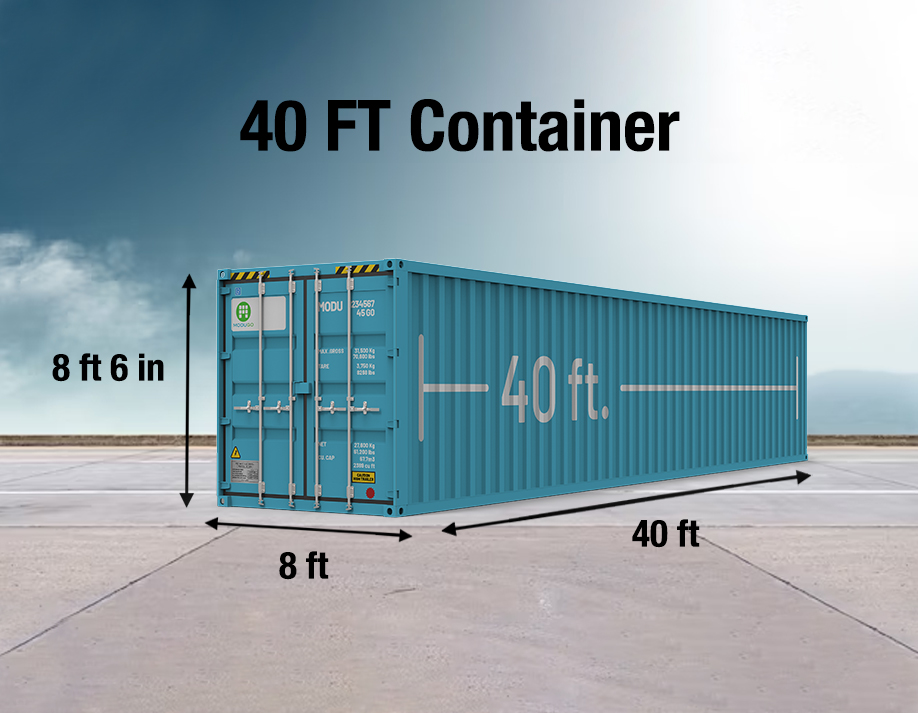What is FEU: Forty-Foot Equivalent Unit
Learn what FEU stands for and how it is used to measure cargo capacity in the shipping industry.
Table of Contents
Are you baffled by the acronym "FEU" in international shipping? Curious about its impact on your shipping costs and overall logistics? Want to learn more about its importance in the freight industry?
Keep reading to explore more information of FEU, including container dimensions, the difference between FEU and TEU, and reasons to choose FEU, read on.
What is FEU Container Dimension?
When discussing the dimensions of an FEU container, it's essential to consider both the exterior and interior measurements.
Understanding the interior dimensions of a container is crucial for businesses and importers, as it directly affects the amount of cargo that can be stored and transported. By being aware of the container's internal measurements, you can effectively plan your shipments, optimize space utilization, and reduce overall shipping costs.
The following table provides a clear overview of these dimensions:
| Dimension | Length | Height | Width |
|---|---|---|---|
| Exterior Dimensions | 40 ft | 8 ft 6 in | 8 ft |
| Interior Dimensions | 39 ft 6.5 in | 7 ft 9.5 in | 7 ft 8 in |
 FEU Dimensions
FEU Dimensions
FEU and TEU: Clear Comparison
Find below some of the significant differences between FEU and TEU;
| FEU | TEU | |
|---|---|---|
| Size | 40ft X 8ft X 8ft 6’ | 20ft X 8ft X 8ft 6’ |
| Internal Dimension | 39ft 6.5’ X 7ft 8’ X 7ft 9.5’ | 19ft 4’ X 7ft 8’ X 7ft 9.5’ |
| Weight of container | 3700 Kg | 2280 Kg |
| Volume | 67 CBM | 33CBM |
| Acronym | Forty-foot Equivalent Unit | Twenty-foot Equivalent Unit |
| Total Payload weight | 26730Kg | 28310 kg |
| Net cargo weight | 28800Kg | 28200kg |
| Cubic capacity | 2376 cu.ft | 1164 cu.ft |
Why do we use FEU?
FEUs serve several important purposes in the shipping and logistics industry.
First and foremost, they provide a standardized unit of measurement for container capacity, allowing shipping companies to effectively calculate and manage the volume of cargo being transported. This uniformity simplifies the process of comparing and calculating container capacities across different shipments.
The use of FEU contributes to more accurate overall shipping cost calculations. The consistent measurement offered by FEUs allows shipping companies to better understand the cargo volume, which in turn impacts factors like fuel consumption, required labor, and the overall shipping process.
In addition, the use of FEUs promotes safe and efficient cargo loading by providing a common unit for comparing container capacities. This helps ensure that cargo is loaded optimally and that the weight is evenly distributed throughout the ship, reducing the risk of overloading and enhancing safe navigation in challenging waters.
Conclusion
In conclusion, understanding FEUs is essential for businesses engaged in international shipping.
FEUs offer a standardized unit of measurement, enabling accurate cost calculations, efficient cargo management, and safe loading practices. By mastering the concept of FEUs, businesses can optimize their shipping strategies and enhance overall logistics performance.